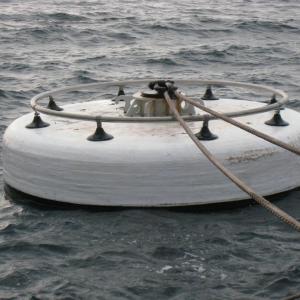

Add to Cart
Marine Floating Buoy High Buoyancy Mooring Buoy For Ocean Mooring System
How To Use Marine Floating Buoy Correctly
It is important to use marine floating buoys correctly to prevent unnecessary wear and tear on the mooring system and protect your vessels.
Advantage of Marine Floating Buoy
1. Tough, impact-resistant polyethylene plastic (HDPE / MDPE / LLDPE)
2. Built-in UV inhibitors can reduce degradation caused by sunlight
3. Handle can simplify installation of pipeline buoy
4. Molded bolt holes for easy float installation
5. The float can have or without foam core
6. Monolithic structure
Additional Attention Points of Marine Floating Buoy
1. In many coral reefs, marine floating buoys surround the
shallowest coral reef area or are located on the ocean side of the
coral reef. Approach the marine floating buoy from either side of
these shallow waters and always turn to the outside of the buoy
ring. Do not drive directly over the shallow reef to reach the
buoy.
2. You should keep idling/not waking up near the boat buoy. Do not
meander between buoys and watch out for swimmers, snorkelers, and
divers foam.
3. If there is no buoy, it can only be anchored in the sand, not in
the coral. Always check to make sure your anchor is not dragging
and the anchor chain is not in contact with the coral.
4. Encourage smaller ships to moor to each other, thereby allowing
larger ships to enter the buoy.
5. When the sailboat is on the buoy, it should not drop the large
sail like a stable sail; this puts a lot of pressure on the bolts
of the mooring ring.
6. The buoy positions have been separated to provide clearance for
most ships when moored under normal conditions. To avoid grounding,
be careful when approaching or strapping to the buoy. Containers
larger than average must be checked for depth to avoid contact with
the bottom.
Specification of Marine Floating Buoy
For further information free to contact us.
